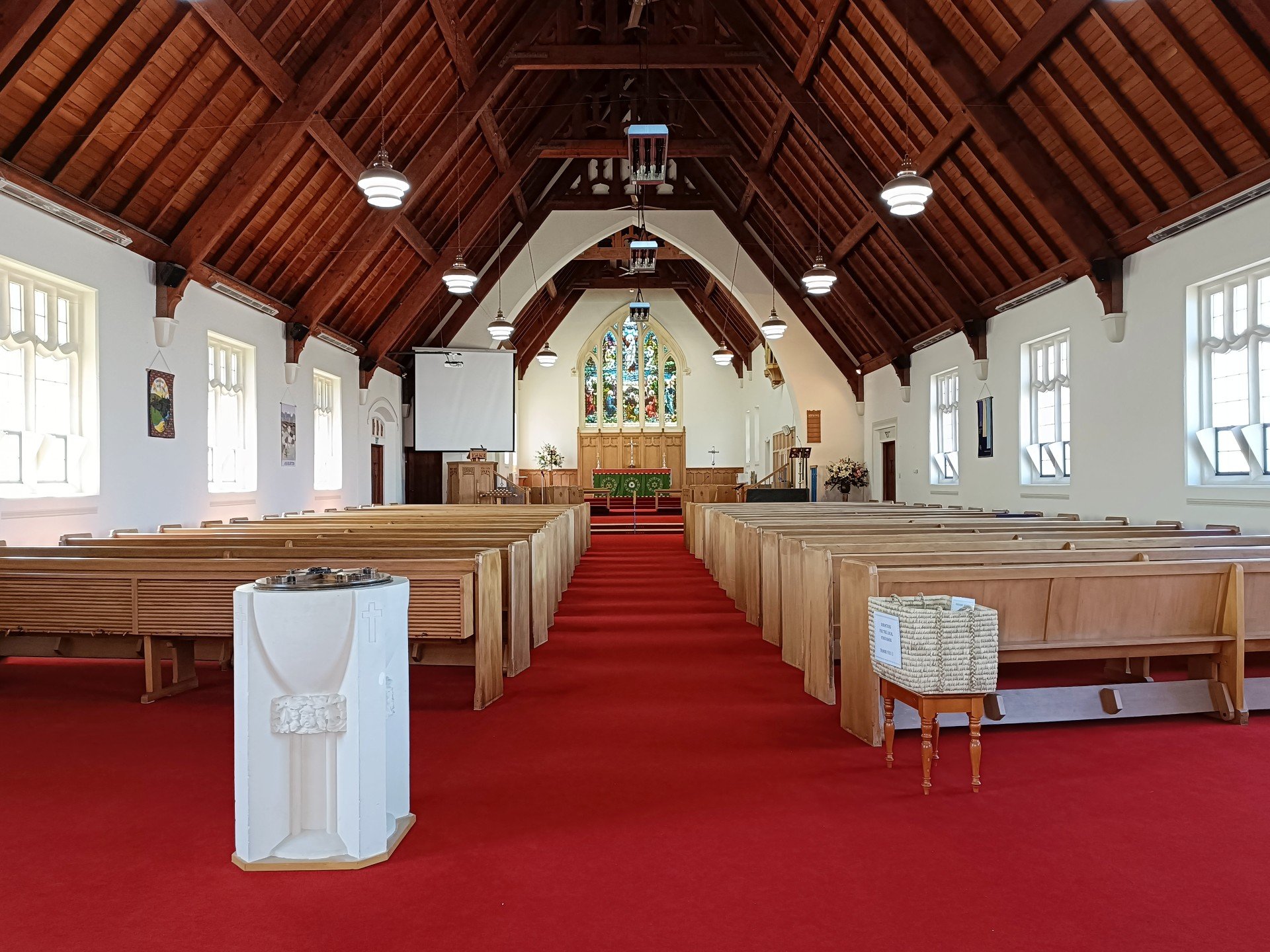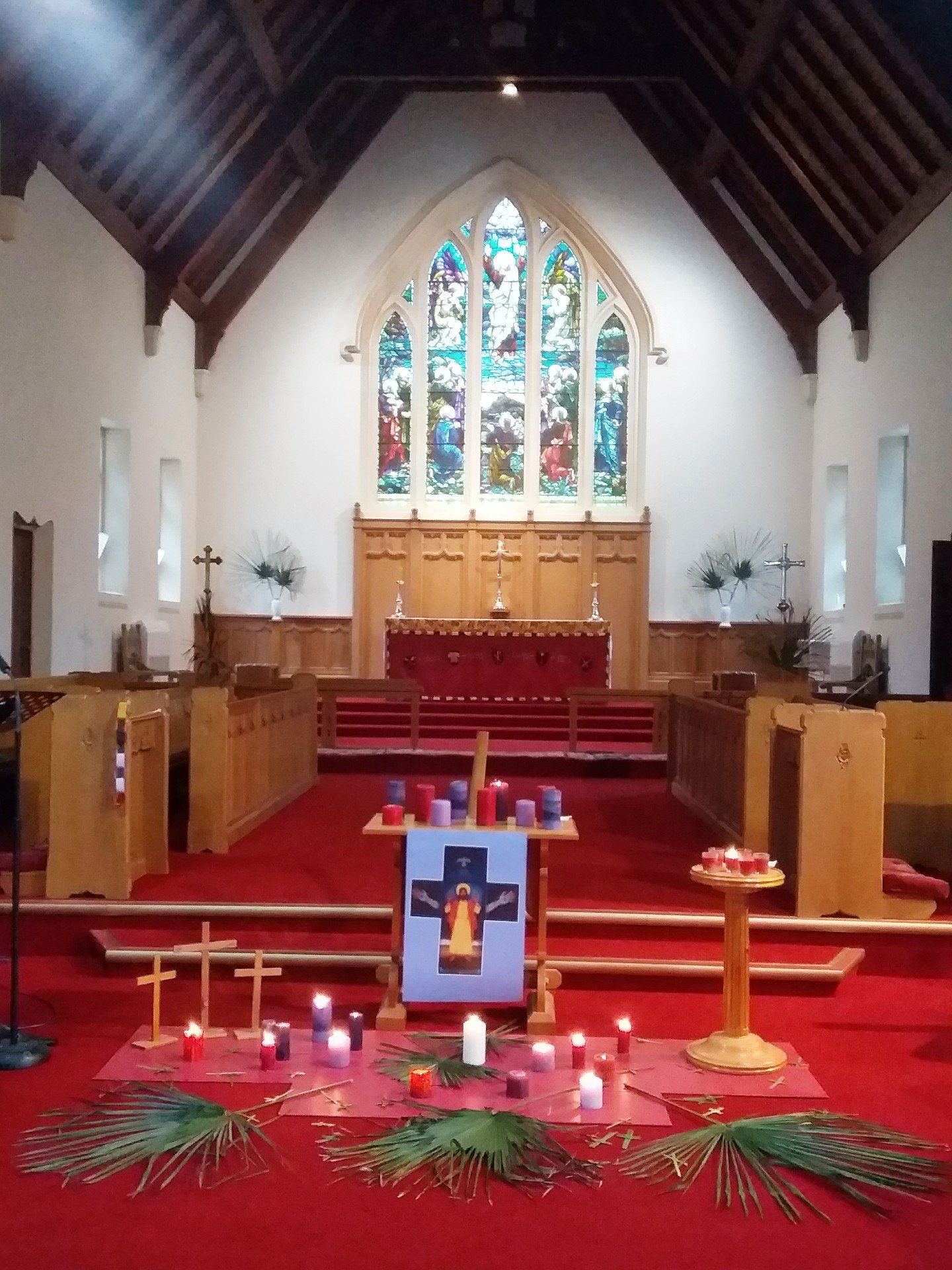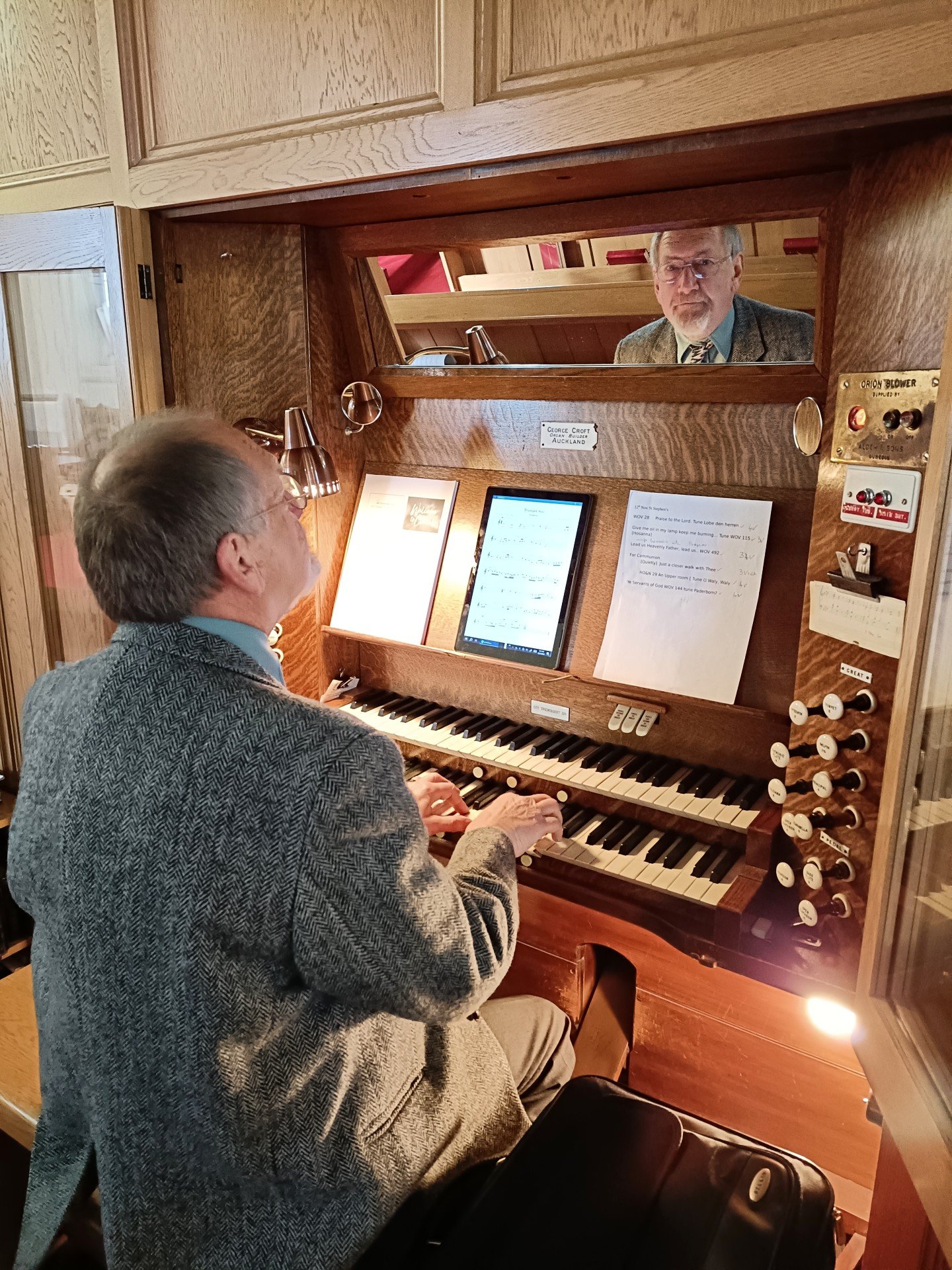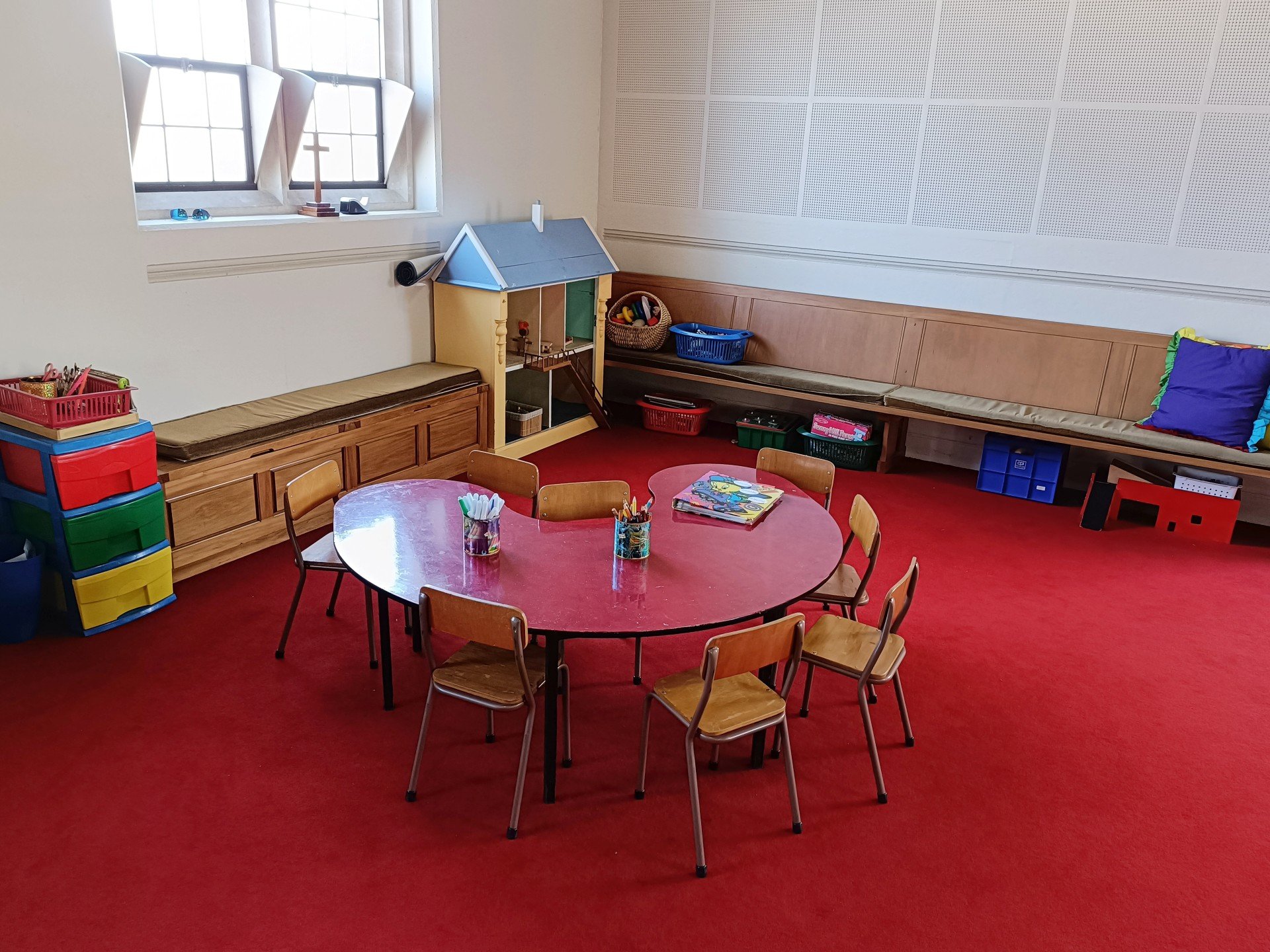
St Stephen’s
St Stephen’s Church
64 Park Street, Ashburton
St Stephen’s has an open, peaceful atmosphere and welcoming congregation. Services are led by local clergy and lay ministers, with occasional guest preachers.
Music at St Stephen’s 10am services includes organ, piano and choir, with hymns and songs from across the centuries, including music from the NZ Hymnbook Trust. There is no music used at 8am or midweek services.
The church building itself is large and light, with cushioned pews and an adjoining intimate older-style chapel. There are beautiful stained glass windows from the earlier church which was replaced in 1963.
The modern hall, lounge, office, kitchen and toilets are accessed from inside the rear of the church. Baby change facilities are available in the men’s and women’s wheelchair accessible toilet cubicles.
Parking is available in the church grounds, and along the roadside.
History
-
The first Anglican church services in Ashburton were held occasionally from 1857, and regularly from 1865. The foundation stone for the first St Stephen’s church was laid on December 30, 1875, the church was built during the following year, and extended a few years later.
In the late 1950s there was discussion of a new church to replace the aging one. The last services in the original 87 year old church were held on June 16, 1963.
A foundation stone for the new church had been laid in 1961, and the new church opened with a dedication service on June 22, 1963. The cost of church was 67,000 pounds.
The side chapel of the new church was designed to be, as close as possible, a miniature of the previous church building, incorporating many former features – memorial panels, the altar, communion rails, altar cross and candlesticks, and some of the smaller stained glass windows.
The “new” St Stephen’s church, now more than 60 years old, is a large, light, carpeted church, with cushioned pews and a peaceful atmosphere. The beautiful stained glass Ascension window above the main altar is from the earlier church. The century old pipe organ is also from the previous church.
In 1997 a new hall complex opened, with internal ramp access to the rear of the church. It has a parish office and vicar’s office, along with a hall for up to 80 people, an adjoining kitchen, lounge, dining room and counselling space, and accessible toilets.
-
Vicars and curates led the parish for over a century, and then in 1991 serious consideration began to be given to Total Ministry (also known as Local Shared Ministry or Mutual Ministry). This involved the identification and training of parishioners to form a licenced lay and clergy team which would lead ministry, resourced by an Enabler.
“There was a strong feeling that inevitably there would be just one parish for the whole of Mid Canterbury. However the need for country communities to retain their identity was recognised. Other smaller country communities would no doubt need to take on the Total Ministry concept but there needed to be a Mission for the whole Mid Canterbury region.”
In 1992 home groups and Education for Ministry began in the parish, growing people’s Biblical, theological and historical knowledge. In 1994 a new Vestry and committee structure began – the co-ordinator of each committee would be a member of Vestry which would meet every two months as a policy making body. The committee structure allowed a wider group of people to serve. The six committees were Finance and Administration, Worship, Buildings, Grounds, Education and Social/Pastoral Care.
In 1997 the first Alpha course was offered in the parish, introducing members and inquirers to the basics of Christian faith. The same year, the Ashburton parish newsletter The Anglican Link morphed into a bi-monthly Total Ministry publication for the Archdeaconry of Mid Canterbury. The following year, Mid Canterbury’s first Total Ministry calling resulted in the commissioning of the area’s first Ministry Team. This was a time of great energy and ownership of the ministry exercised in the district.
Around 20 years later the parish and Mid Canterbury moved out of Total Ministry, reverting to a vicar-led model, blessed with a great depth of lay and ordained local ministers. The parish continues in this form of leadership, and is now focused on regeneration, seeking to bring to faith a new wave of active Christians who will share God’s mission in the district.

















